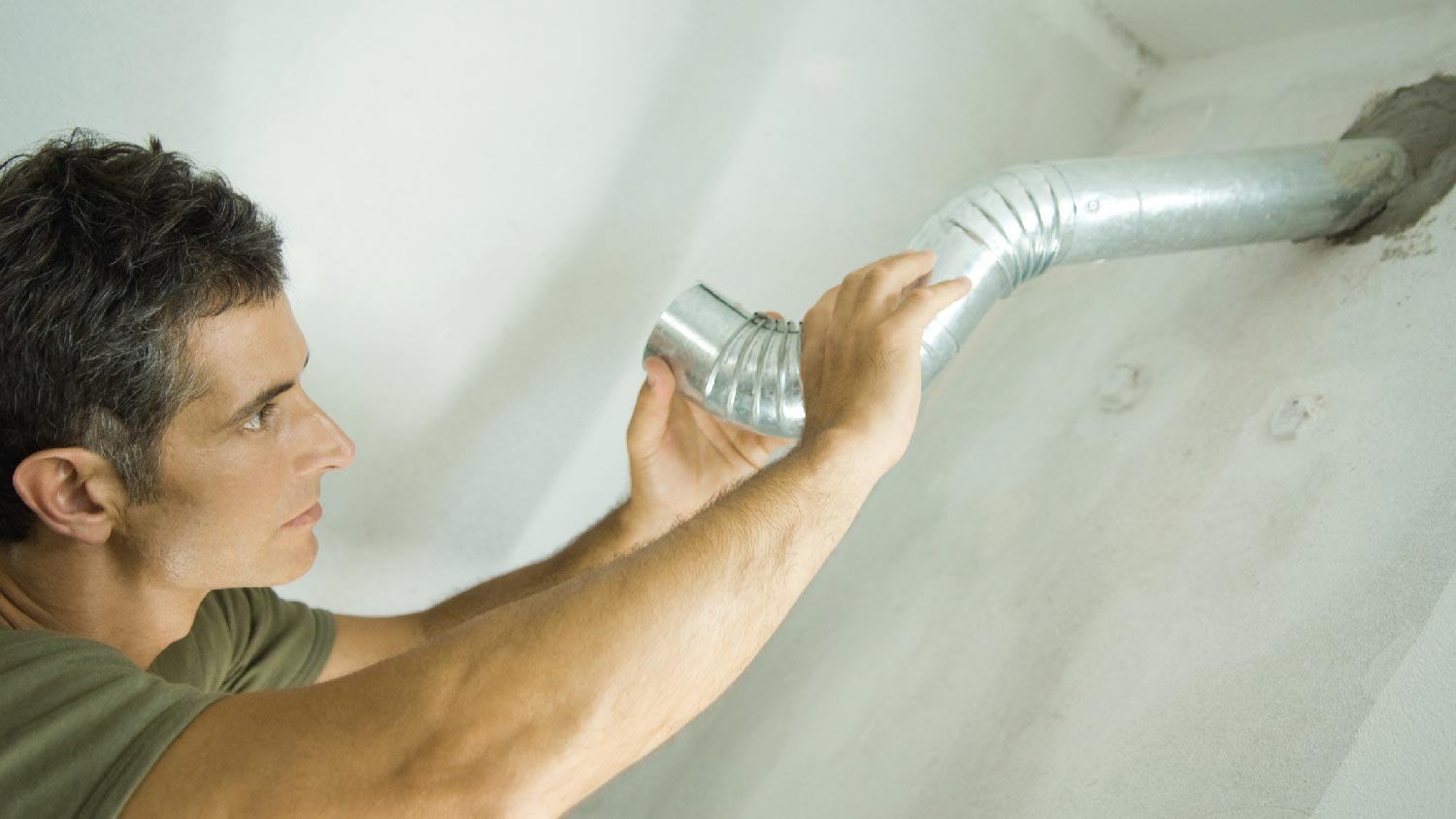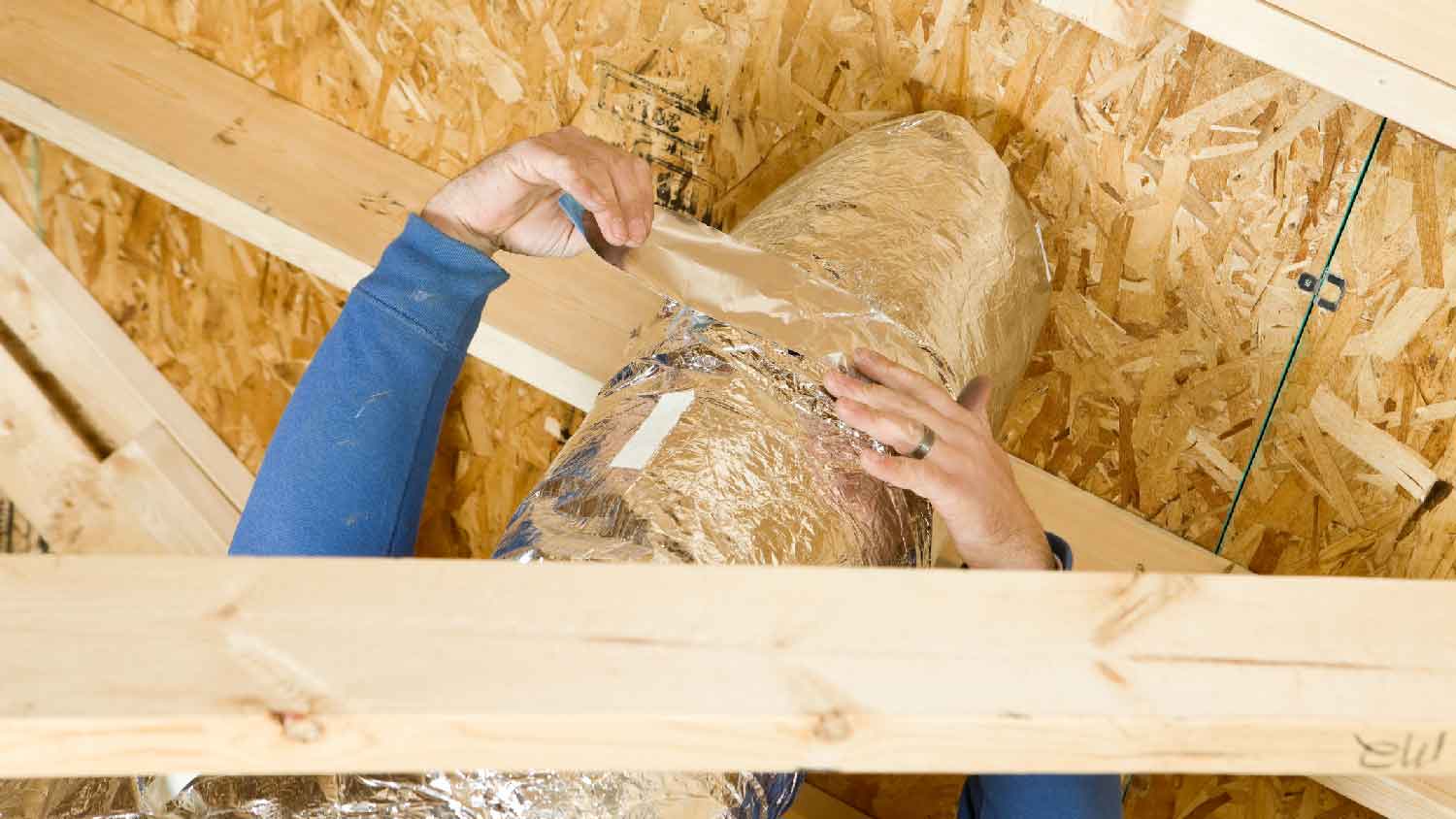How Much Does Air Duct Sealing Cost? [2025 Data]
Duct sealing costs averages $2,250, but can increase depending on your home size and sealing method.


Duct sealing costs $2,250 on average, and the typical cost range is between $500 and $4,000. The HVAC ducts that run behind your walls, above your ceiling, and under your floors help deliver heated and cooled air throughout your home. Inevitably, the building materials will break down over time, causing your energy efficiency to plummet and reducing comfort in your living space.
Luckily, you can seal your ducts to restore efficiency, decrease your energy bills, reduce strain on your HVAC system, and make your home more comfortable. In this guide, we’ll discuss how much duct sealing costs, the cost factors that can influence your total, and how you can save money on this project.
Air Duct Sealing Cost Factors
The typical cost range to seal HVAC ducts is so large because there are a variety of cost factors that influence the total.
Home’s Square Footage
The size of your home dictates how much ductwork you have running through the space, with larger homes requiring more ducts to distribute conditioned air evenly. The larger your home is, the more you’ll spend on duct sealing.
The average cost per square foot for duct sealing is around $1, but this number varies wildly depending on how your duct system is laid out and other factors. Expect to pay somewhere between $0.50 and $1.50 per square foot for duct sealing.
| Home Square Footage | Duct Sealing Cost Range |
|---|---|
| 1,000 | $500 – $1,500 |
| 1,500 | $750 – $2,250 |
| 2,000 | $1,000 – $3,000 |
| 2,500 | $1,250 – $3,750 |
| 3,000 | $1,500 – $4,500 |
Sealing Method

The two methods of duct sealing are manual, which costs $2,250, and aerosol, which costs $1,300. Manual duct sealing fixes large holes and gaps in the ductwork. Aerosol sealing involves spraying a sealant into the system to adhere to the ductwork. It won’t patch large holes, but can seal minor leaks
Duct Layout
HVAC ductwork is hidden behind walls, under floors, and above ceilings, with the only easily accessible points being the vents and air returns. The less accessible your ducts are, the more expensive it will be to find them and seal them. Similarly, your duct’s layout plays a role—if it’s a complicated design, it’ll be harder to access and therefore more expensive to seal.
Condition of Ducts
Ducts in very poor condition may require repairs before they can be sealed, further increasing the overall duct sealing price. The average ductwork repair costs $660 but ranges between $200 and $2,100 depending on the type of repair and ducts.
Extent of the Leaking
Larger gaps in your ducts will require manual sealing, which is more expensive in most cases, but the number of leaks will play a more significant role in your AC duct sealing costs. You might spend around $50 per accessible supply vent that needs sealing or $50 to $100+ per leak behind walls, under floors, or in the attic. Additional leaks throughout your system will drive up the total.
Pressure Testing
Many people want to confirm that their air ducts are in tip-top shape after having a professional come in to seal them, so they may order a pressure test. This test usually involves creating negative pressure inside the system using a duct fan and then testing for leaks. An HVAC duct pressure test will usually cost you between $200 and $450, or around $300 on average.
Inspection
An HVAC duct inspection costs around $150 on average, and it can help your professional determine exactly where leaks are occurring and how extensive the leaking is. An inspection may or may not be required by your expert before starting the sealing work, as it can help identify which type of sealing is appropriate and where the problem areas in your system lie.
Rebates and Incentives
Depending on where you live, you might be eligible for energy efficiency rebates, tax credits, or other incentives for carrying out HVAC duct sealing. These can effectively bring down your duct sealing costs by hundreds of dollars, so they’re worth looking into. You can usually find information on energy efficiency rebates on the Database of State Incentives for Renewables and Efficiency (DSIRE).
Sealing Air Ducts Yourself vs. Hiring a Pro

Labor makes up the majority of the cost to seal HVAC ducts, with around 90% of the average $2,000 duct sealing total going toward labor and just 10% going toward materials for manual sealing. That means you could save upwards of $1,900 on the project if you do the work yourself.
However, it’s usually best to leave duct sealing to a professional. Not only is it difficult to locate leaks without professional equipment, but failing to get a good seal over all leaking sections of your ducts might still leave you with leaks and a loss of efficiency.
Even though duct sealing can get expensive, it’s usually worth the investment, and we recommend leaving the work to a duct installer near you. Hiring a reputable company will ensure you get a duct inspection beforehand, all of the leaks addressed, and a pressure test afterward to make sure your system is running like new again.
How to Save Money on Duct Sealing
There are a few ways you can cut costs on duct sealing, including:
Inspections: A duct inspection will identify your leaks and the most cost-effective way to fix them.
Pressure test: A post-sealing pressure test will confirm that your ducts are fully sealed, which will save you more on heating and cooling bills over time.
Use aerosol sealing: If your system only has minor leaks, you can save around $1,000 by choosing aerosol sealing over manual sealing.
Find incentives: Your state, municipality, or utility company may offer rebates or other incentives for duct sealing costs. Make sure you check before you pay out of pocket for the work.
Opt for add-on services: Duct add-on services will cost less if you bundle. For example, air duct cleaning costs might go down by a few hundred dollars if it’s done while your tech is already on site.
How Angi Gets Its Cost Data
Home is the most important place on earth, which is why Angi has helped more than 150 million homeowners transform their houses into homes they adore. To help homeowners with their next project, Angi provides readers with the most accurate cost data and upholds strict editorial standards. We extensively research project costs to develop the pricing data you see, so you can make the best decisions for you and your home. We rely on reputable sources, including the U.S. Bureau of Labor Statistics, academic journals, market studies, and interviews with industry experts—all to ensure our prices reflect real-world projects.
Want to help us improve our cost data? Send us a recent project quote to costquotes@angi.com. Quotes and personal information will not be shared publicly.
Frequently Asked Questions
It’s definitely worth it to seal your HVAC ducts if you have leaks. A leaking duct will let conditioned air seep into the voids between your living space and the exterior, which means that energy is mostly wasted. Not only will sealing your ducts result in lower energy bills, which can pay for the sealing entirely, but it also reduces wear and tear on your AC and furnace. Over time, you could save money on maintenance and repairs. It’s not all financial benefit, either: Duct sealing improves comfort in your living space, adding to the value of the work.
Duct sealing takes between two and eight hours, in most cases, depending on the size of your house, how accessible your ductwork and vents are, and what other services—like inspections and pressure tests—your professional carries out. For most homes, an HVAC tech will take around four hours to seal all of the leaks. You should plan on being home for the entire process, as the tech will need access to all parts of your living space.
There are a few things that you can look out for that indicate that you need duct sealing, but the two most critical ones are less comfortable air in your living space and increased utility bills. If you notice that you’re paying more often for HVAC servicing and maintenance, that could suggest that you need duct sealing, as well, as leaks put added strain on your system. You may also notice musty odors in parts of your home, as leaks can lead to condensation on your air ducts that can promote mold growth behind your walls.





- Furnace Repair
- Air Conditioning Repair
- HVAC Repairs
- Furnace Installation
- Wood & Pellet Stove Repair
- Dehumidifier & Humidifier Repair
- Heat Pump Companies
- Swamp Cooler Repair
- Wood Stove Services
- HVAC Companies
- Commercial A/C Repair
- Geothermal Installation
- Air Conditioning Installation
- Boiler Repair
- 24 Hour Furnace Repair
- Geothermal Repair
- Heat Pump Repair
- Humidifier Installation
- Thermostat Repair
- Thermostat Installation
- Nest Installation
- Heating & Cooling
- Heating Repair
- Furnace Cleaning
- Furnace Tune-Up
- HVAC Technicians
- Subcontractors
- Furnace Maintenance
- Plumbing & Heating Companies
- Wood Stove Inspection
- Mini Split Installation
- Wall Heater Repair
- Duct Installers










